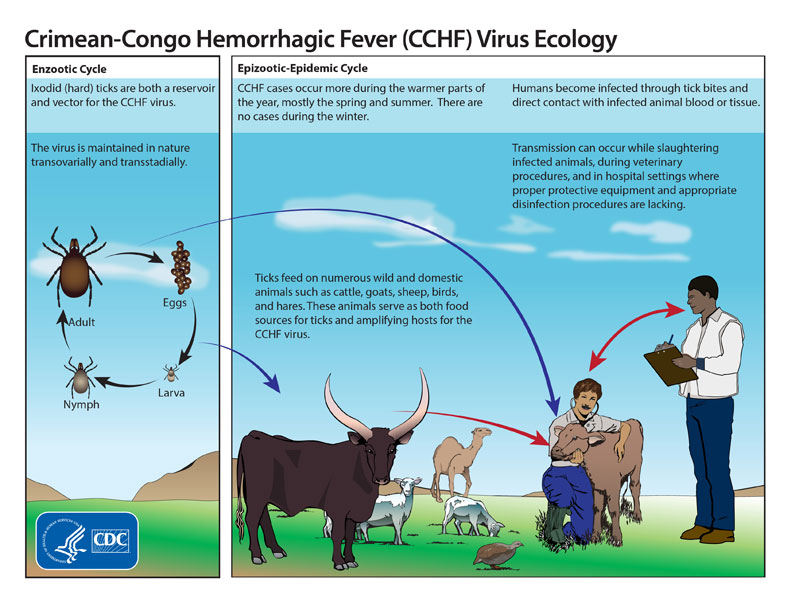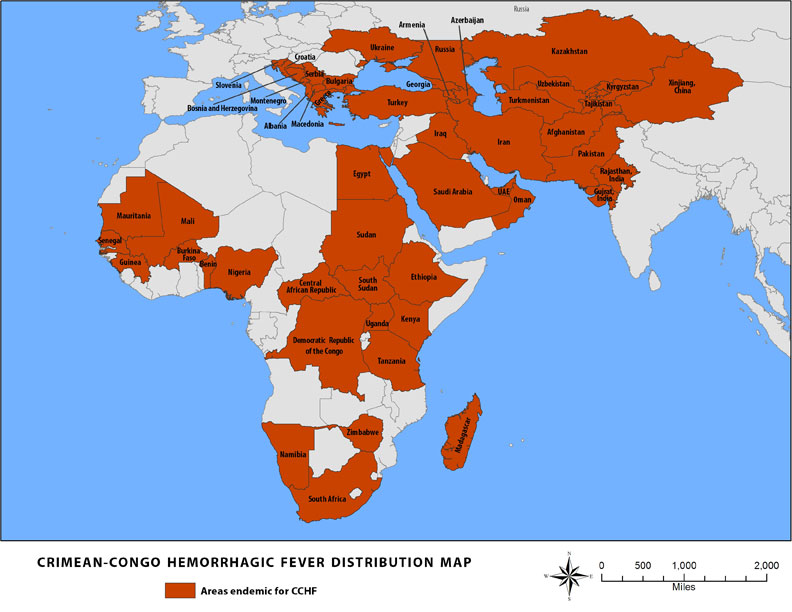Crimean-Congo Hemorrhagic Fever
Ron Smith, MD
Crimean-Congo Hemorrhagic Fever (CCHF) in the News
This transmission electron microscopic (TEM) image revealed the presence of numerous Ganjam virus virions in this tissue specimen. This Nairoviridae family member is antigenically, closely related to, and an Asian variant of, the Nairobi sheep disease virus (NSDV). Though not contagious, Ganjam virus is an arbovirus, spread through the bite of certain ticks, including Haemaphysalis intermedia, and Rhipicephalus hemaphysaloides. Ganjam virus is a negative-sense single-stranded RNA viruses ((-) ssRNA), which are spread through contact with infected arthropods and rodents.
Quick Overview



Crimean-Congo Hemorrhagic Fever (CCHF) Distribution Map
Areas endemic for CCHF
- Albania
- Armenia
- Azerbaijan
- Benin
- Bosnia and Hercegovina
- Bulgaria
- Burkina Faso
- Central African Republic
- China
- Croatia
- DR Congo
- Egypt
- Ethiopia
- Georgia
- Greece
- Guinea
- India
- Iran
- Iraq
- Kazakhstan
- Kenya
- Kirgizstan
- Macedonia
- Madagascar
- Mali
- Mauritania
- Montenegro
- Namibia
- Nigeria
- Oman
- Pakistan
- Russia
- Saudi Arabia
- Senegal
- Serbia
- Slovenia
- South Africa
- South Sudan
- Sudan
- Tajikistan
- Tanzania
- Turkey
- Turkmenistan
- UAE
- Uganda
- Ukraine
- Zimbabwe
